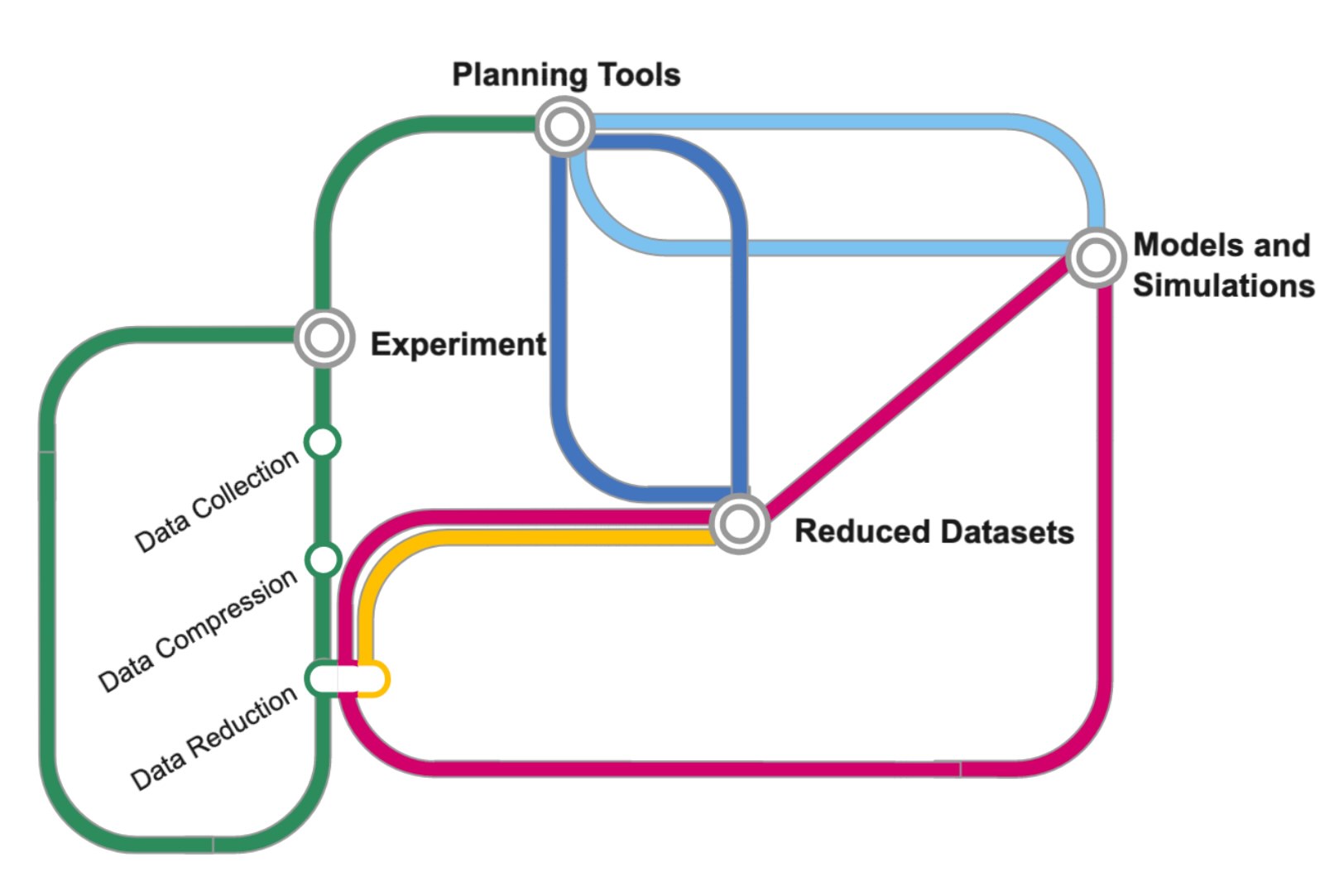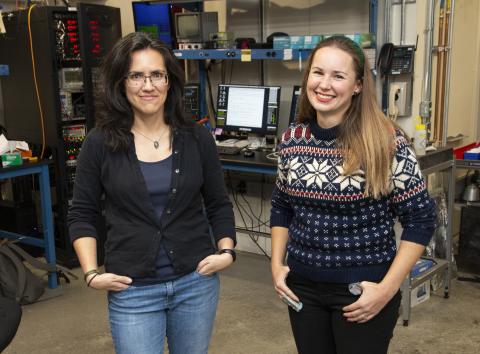The challenge now is to efficiently use these expensive techniques - and the enormous datasets they produce - to better understand existing problems and gain insight into new phenomena that have been previously unreachable.
CHESS has been at the heart of this explosive growth, and will now develop new, efficient experimental and data processing protocols for using these techniques.
"Drowning in Data"
Six days of beamtime at CHESS using High Energy Diffraction Microscopy (HEDM) can collect over 7.5 Terabytes of raw data. Critical information collected during this beamtime can drive the evolution of new materials. However, sometimes the data volumes, in combination with arduous data reduction workflows, leave researchers archiving and never analyzing potentially valuable datasets.
"We are drowning in data," says Matt Miller, Principal investigator of the Materials Solutions Network at CHESS and the Willis H Carrier Professor in Engineering at Cornell's Sibley School of Mechanical and Aerospace Engineering. "And we have a whole generation of people [at CHESS & Cornell], like Dr. Kate Shanks, building high efficiency X-ray detectors that are helping us drown even faster."
Miller explains that this type of project is in line with what CHESS has been doing for decades: developing the tools and methodologies that currently take heroic efforts with extensive resources and turning them into simple projects that benefit more researchers.
Two people driving this effort are Kelly Nygren and Kate Shanks, CHESS staff scientists at the heart of this project and "in the trenches" of engaging with users and their data. Shanks and Nygren, lead scientists at the Forming and Shaping Technology beamline (FAST) and Structural Materials Beamline (SMB), respectively, explain that they wrote this proposal to address the pain points they have experienced with users before, during, and after experiments and that one of the goals of this project is to help assist the users before they even step foot onto the CHESS experimental floor.
The large volumes of data, typically of disparate types and dimensionality, are at the core of this problem. This data needs to be generated, processed, and analyzed linearly to understand the new material's potential. Through this project, says Shanks, CHESS aims to upend the linear approach to data reduction entirely and will create a new workflow to help researchers plan their experiment, implement "on-the-fly" tools for data compression and monitoring, and introduce real-time data reduction and analysis infrastructure.
"This project aims to improve the overall user experience in every way," says Shanks. "To make data collection and processing better and the overall user experience easier at CHESS while moving the materials science field forward."
"Everything is better when it is hotter."
While this project aims to make the overall research process more efficient, The large volumes of data, typically of disparate types and dimensionality, are at the core of this problem. This data needs to be generated, processed, and analyzed linearly to understand the new material's potential. Through this project, says Shanks, CHESS aims to upend the linear approach to data reduction entirely and will create a new workflow to help researchers plan their experiment, implement "on-the-fly" tools for data compression and monitoring, and introduce real-time data reduction and analysis infrastructure.
Refractory metals have promising properties, like withstanding the intense heat of a jet engine. However, these metals are rare. And the search for suitable alloys or variants is dramatically slowed by the need for more tools and methods to characterize and analyze these materials rapidly.
"Everything is better when it is hotter, and we never have metals that can get hot enough," says Miller, describing the efficiency of components like jet engines. "But at the same time, everything also gets more challenging, making this a difficult problem."

"Electron microscopy and X-ray techniques complement each other very nicely"
This new scientific workflow will impact more than just researchers using X-rays. A major thrust of this grant is to make this research more tractable to other techniques, particularly electron microscopy. To realize this extended scope, the project involves a multi-disciplinary team that reaches beyond CHESS and Cornell, and includes experts in materials science and electron microscopy, at the University of California Santa Barbara; detector firmware and data processing, at SUNY Oswego; and machine learning, at Tufts University.
One major challenge of creating a workflow for multiple modalities, says Shanks, is that electron microscopy and X-rays are complicated as stand-alone techniques, each making large volumes of data and needing complex data processing. "When you try to combine these two techniques," says Shanks, "the difficulty scales almost exponentially, but they have different strengths, and if you put them together, you can achieve a new level of understanding about these material systems."
Shanks explains that this project aims to reach far beyond CHESS. "What we hope to build is a tool kit that will be extremely useful at FAST and SMB and then spun out to other beamlines as well," says Shanks. "Once we refine the processes, these methods will be available to other high-energy X-ray beamlines worldwide."
Read the official project summary here.
The major source of funding for this project comes from a $1.95M grant from the Office of Naval Research, Dr. William Mullins, Program Manager. Partial funding for Drs. Nygren and Shanks is provided by the Cornell College of Engineering Dean Lynden Archer.
